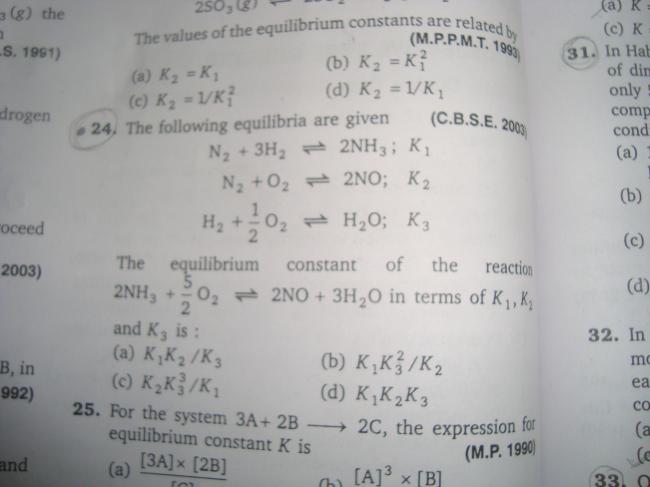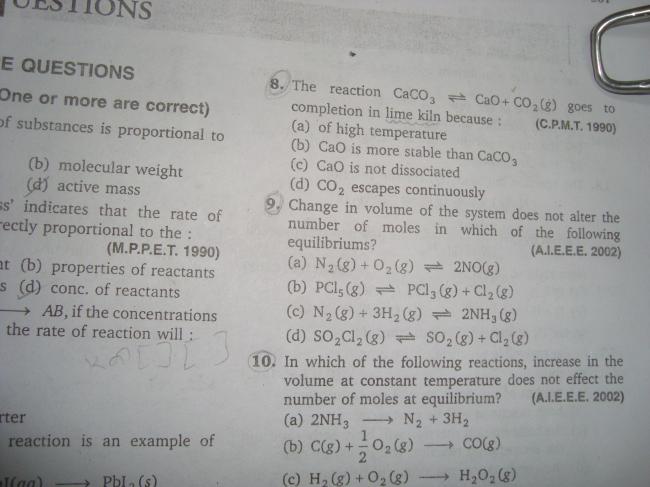
13 Answers
9a)
Since the total no. of moles of reactants and products are equal
Explanation of 8:
See it is a reversible reaction. Since the CO2 is escaping the forward reaction continues and therefore CaCO3 is not formed again
Explanation for 9:
Change in volume will not affect equilibrium if the no. of moles of reactant nad products are equal. Therefore the answer i a) while in others there is differ in total moles
ok for the qn 24. i can give u a simple example.
A reversible gives B(rate constant K1)
C reversible gives D(rate constant K2)
then for the rxn
A+C reversible gives B+D (rate constant K1*K2)
A+D reversible gives B+C (rate constant K1/K2)
Another way
K = [a]/[c][d]
Then [a] = k[c][d]
This way you replace in the final equation
10) if we assume the gases in the rxn behaves ideally then
at constant temp PV=constant therefore if P doesnt change V also doesnt change so the condn shud be Δng=0
